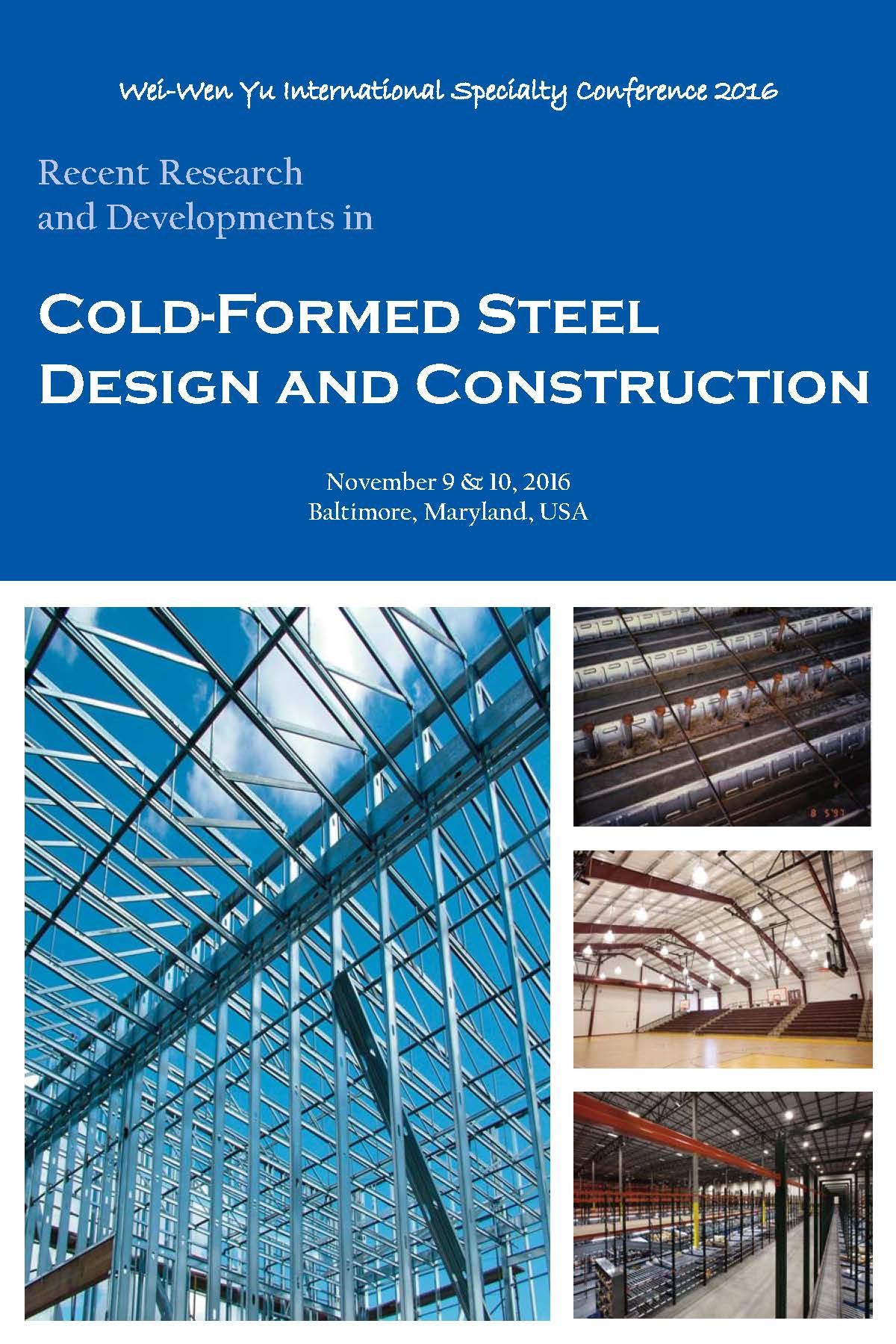Session Dates
10 Nov 2016
Abstract
A series of 12 Base Tests for Z-section purlins with paired interior torsional braces and one flange attached to a flexible horizontal diaphragm are evaluated with the Direct Strength Method. Rather than use the conventional constrained bending stress approximation, a direct analysis philosophy is adopted where cross section stress distributions are calculated using a displacement compatibility approach. With a flexible diaphragm typical of a standing seam roof system, these stresses can deviate substantially from the constrained bending approximation and can significantly impact predicted local and distortional buckling behavior. The displacement compatibility approach incorporates estimates of load imbalances and second order effects that result from the standard base test procedure. Predicted local and distortional buckling strength shows good correlation to tested strength.
Department(s)
Civil, Architectural and Environmental Engineering
Research Center/Lab(s)
Wei-Wen Yu Center for Cold-Formed Steel Structures
Meeting Name
International Specialty Conference on Cold-Formed Steel Structures 2016
Publisher
Missouri University of Science and Technology
Document Version
Final Version
Rights
© 2016 Missouri University of Science and Technology, All rights reserved.
Document Type
Article - Conference proceedings
File Type
text
Language
English
Recommended Citation
Seek, Michael W.; Ramseyer, Chris; and Kaplan, Ian, "A Combined Direct Analysis and Direct Strength Approach to Predict the Flexural Strength of Z-Purlins with Paired Torsion Braces" (2016). CCFSS Proceedings of International Specialty Conference on Cold-Formed Steel Structures (1971 - 2018). 5.
https://scholarsmine.mst.edu/isccss/23iccfss/session9/5
A Combined Direct Analysis and Direct Strength Approach to Predict the Flexural Strength of Z-Purlins with Paired Torsion Braces
A series of 12 Base Tests for Z-section purlins with paired interior torsional braces and one flange attached to a flexible horizontal diaphragm are evaluated with the Direct Strength Method. Rather than use the conventional constrained bending stress approximation, a direct analysis philosophy is adopted where cross section stress distributions are calculated using a displacement compatibility approach. With a flexible diaphragm typical of a standing seam roof system, these stresses can deviate substantially from the constrained bending approximation and can significantly impact predicted local and distortional buckling behavior. The displacement compatibility approach incorporates estimates of load imbalances and second order effects that result from the standard base test procedure. Predicted local and distortional buckling strength shows good correlation to tested strength.



